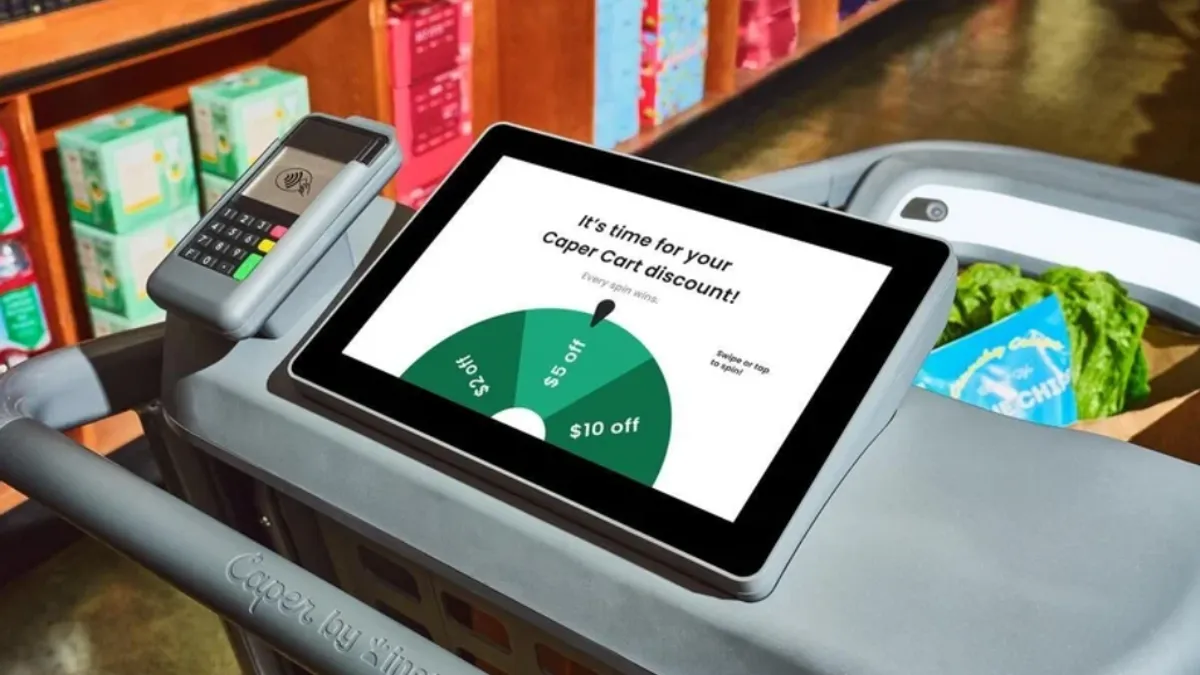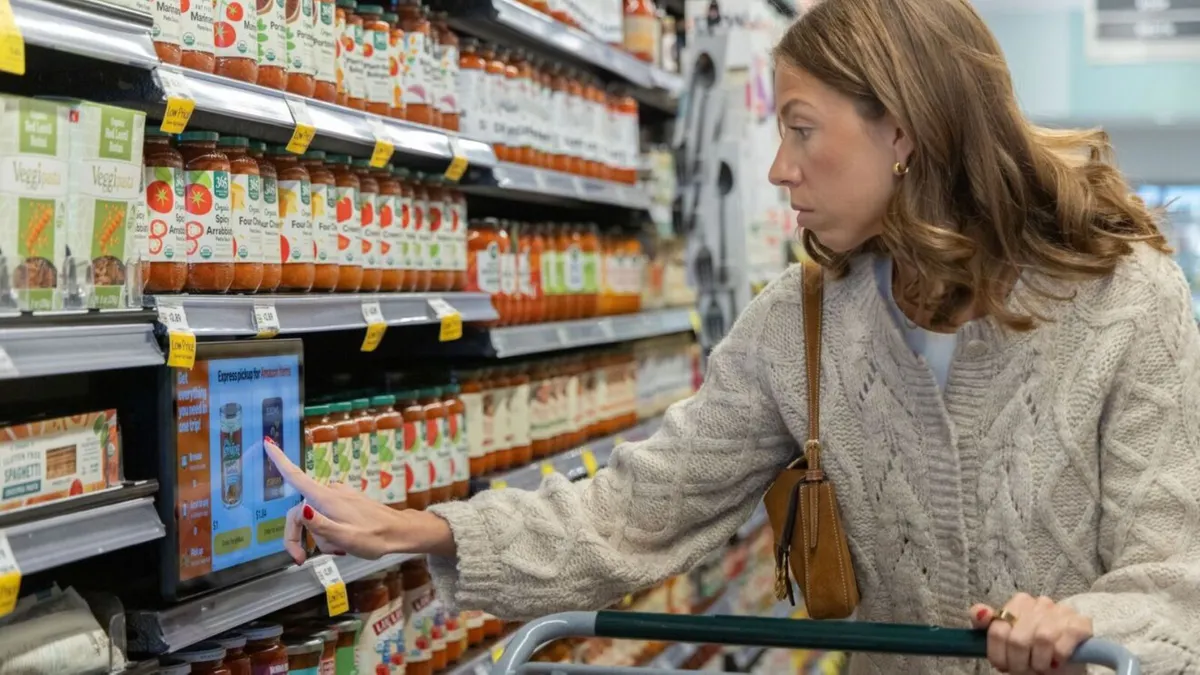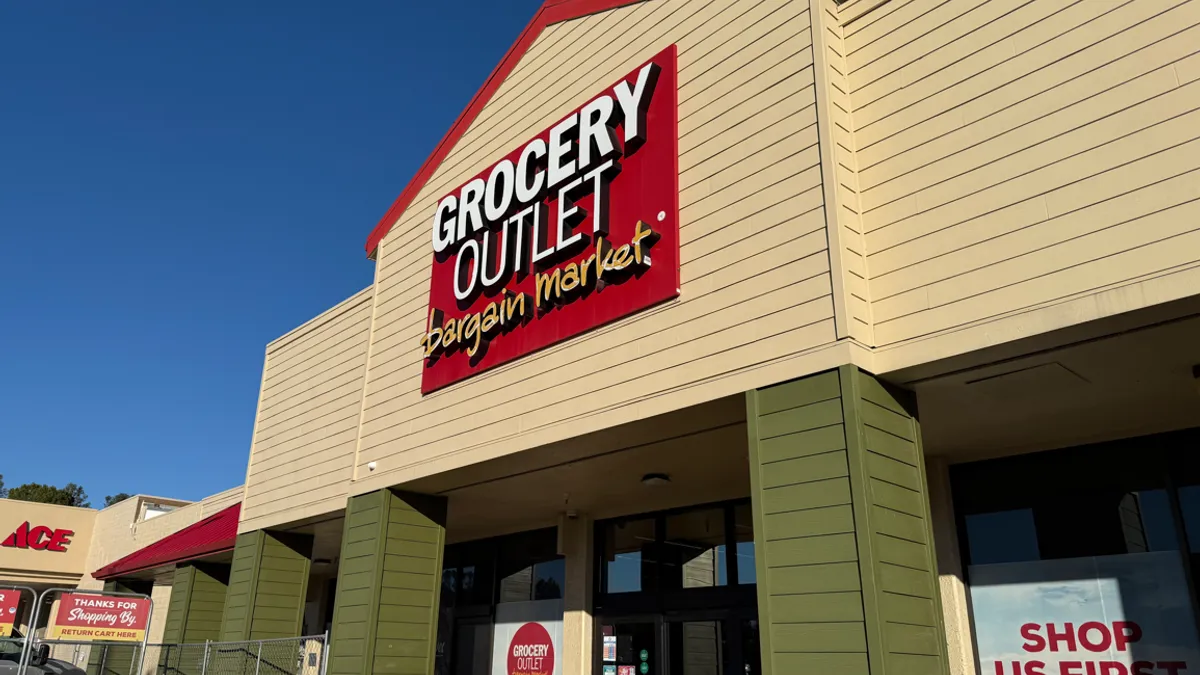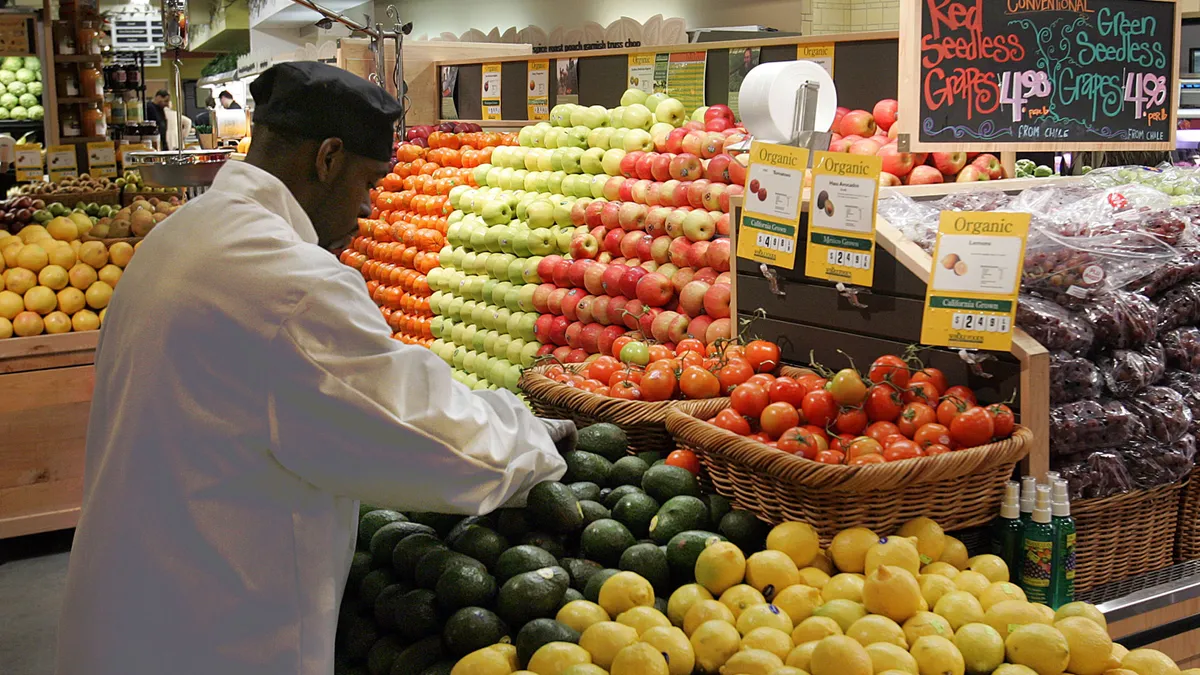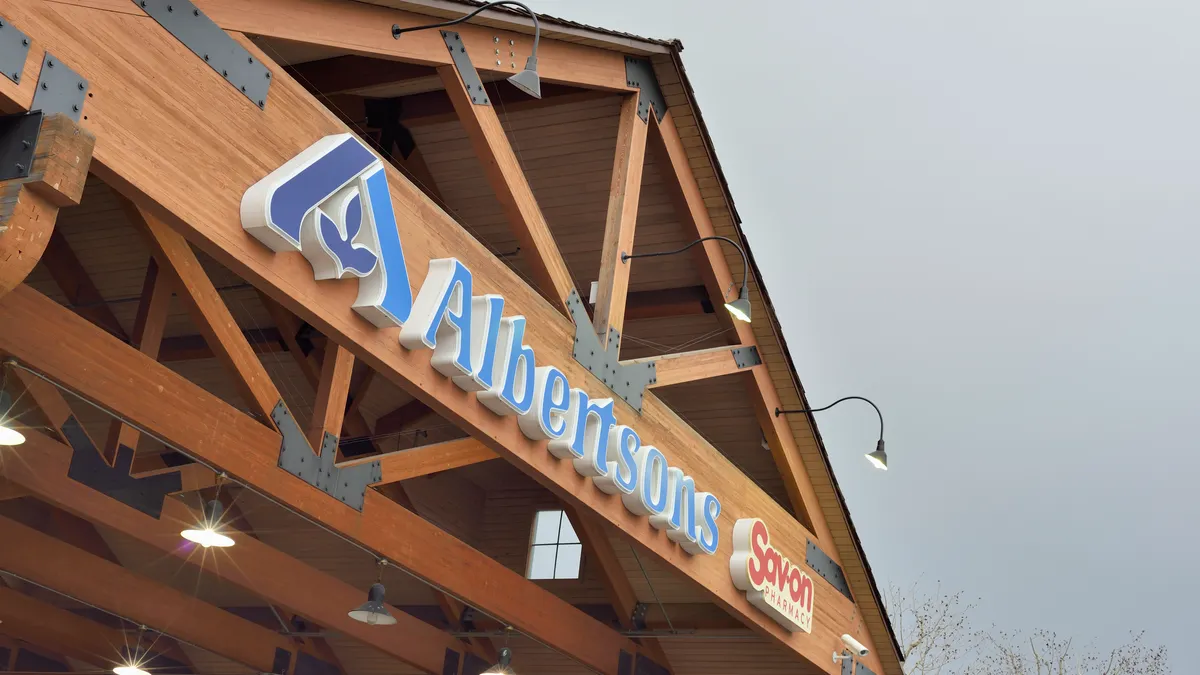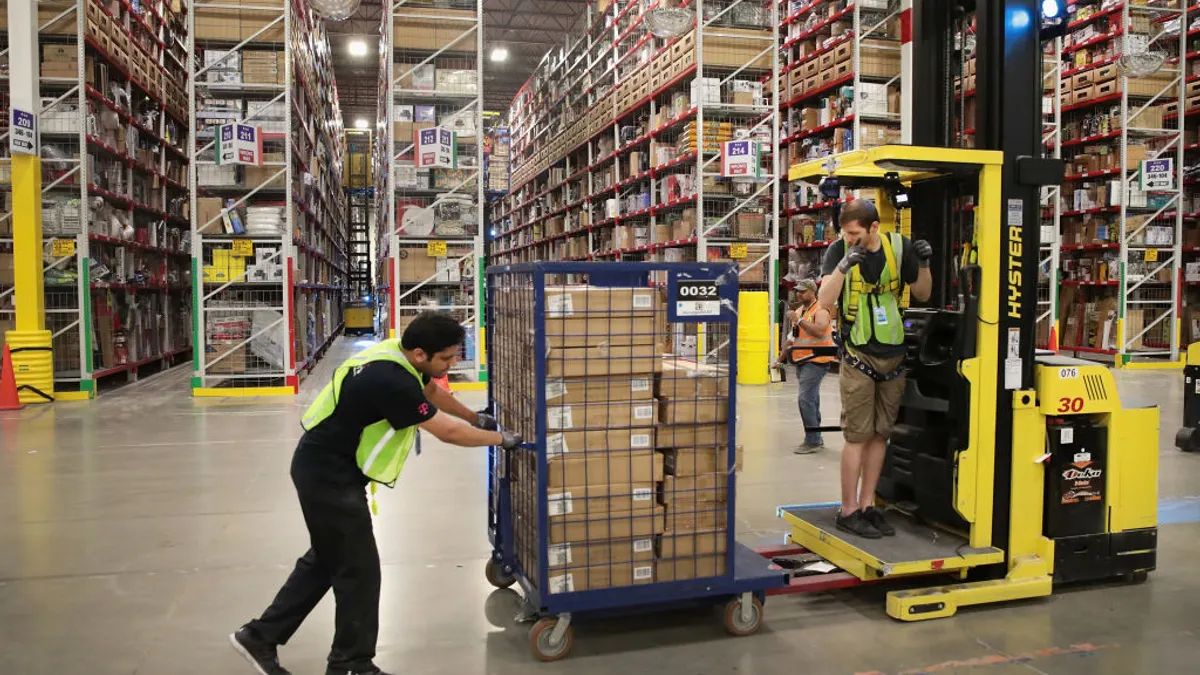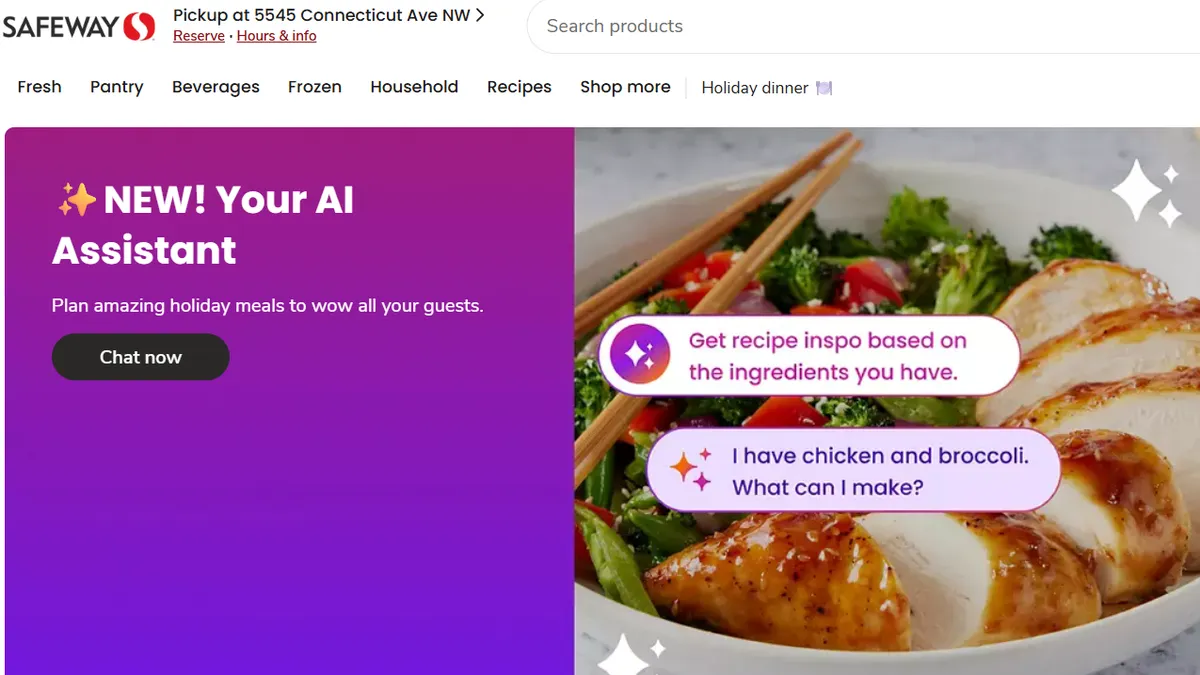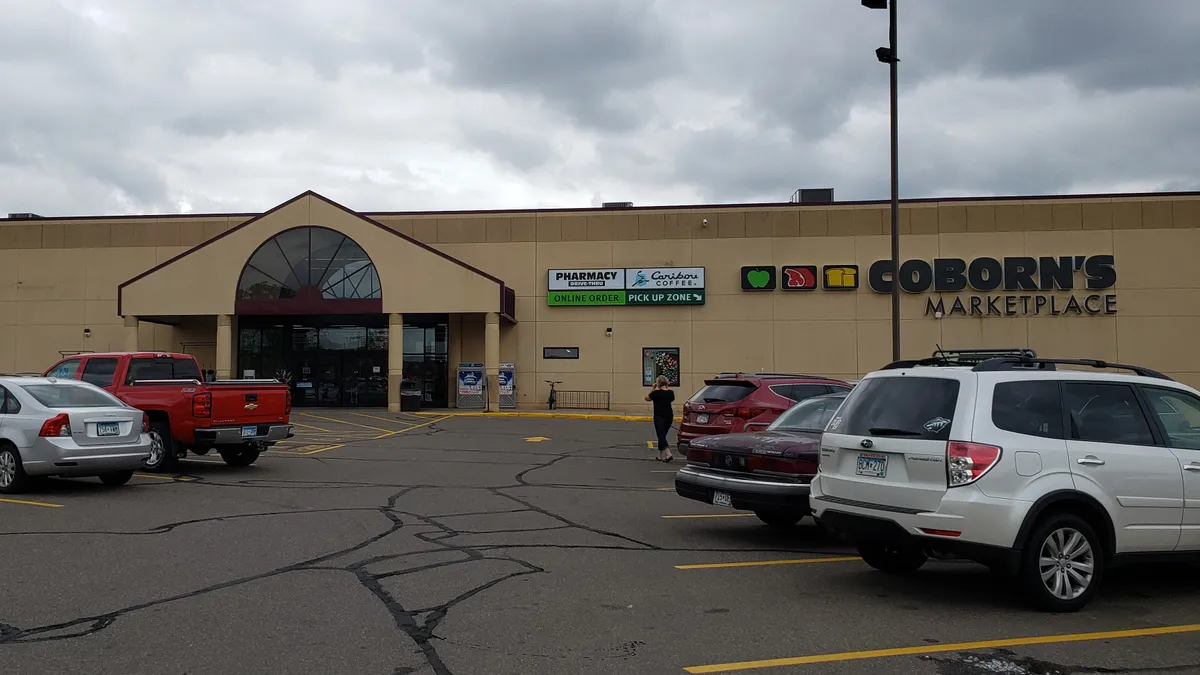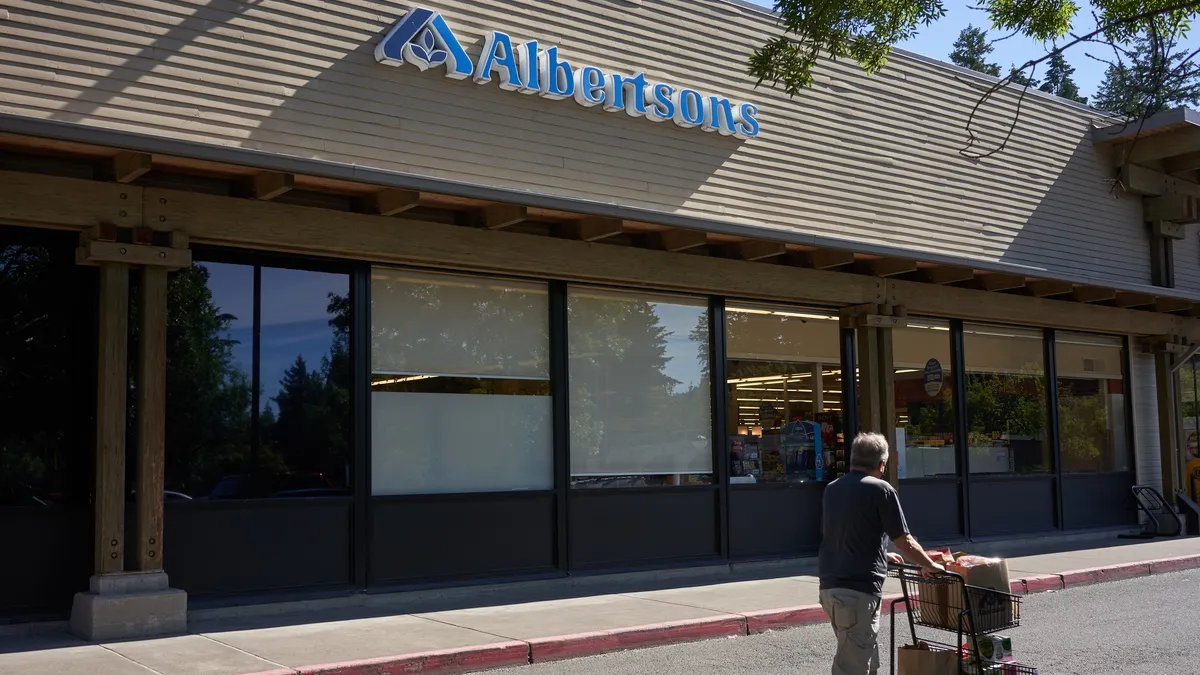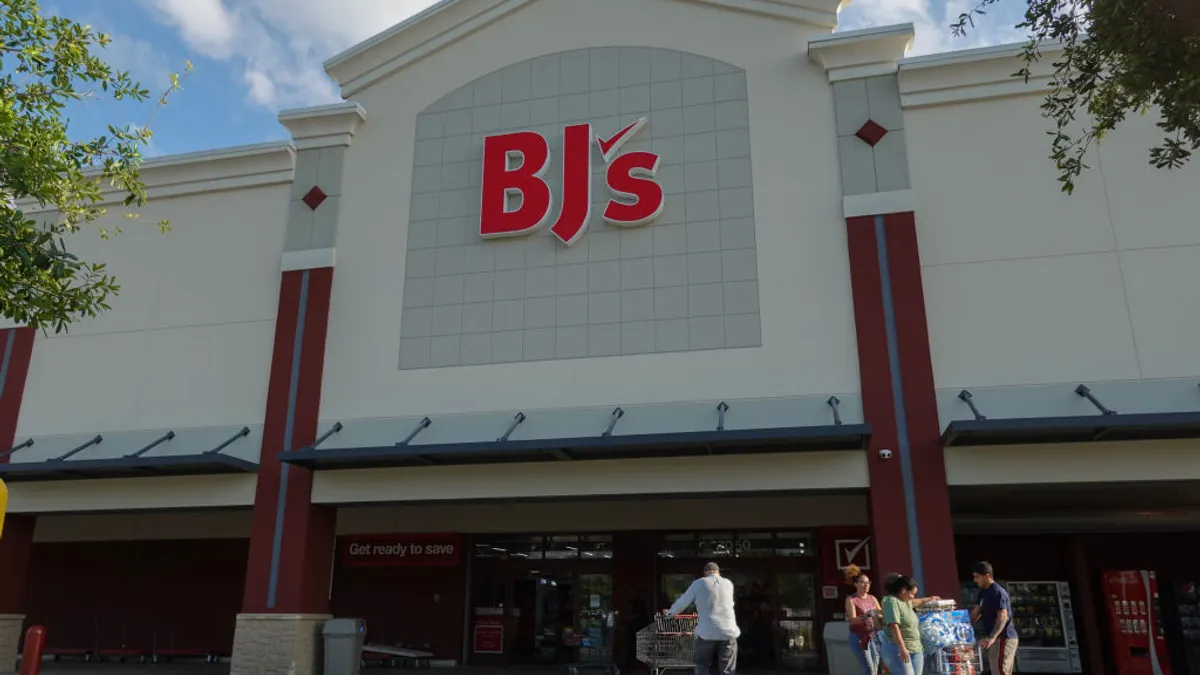Instacart is finding that its Caper Carts smart carts are popular among consumers for an unexpected reason: having more control over their shopping budget.
While skipping long checkout lines seemed like it would be the major draw for smart cart usage, Instacart Chief Connected Stores Officer David McIntosh said that he’s found through conversations with customers using the carts that tallying their order totals and clipping coupons are key reasons for using them.
“When we launched, we were really pitching it as: ‘This is about convenience, skipping the line,’ but what we’ve seen for retailers is that the No. 1 benefit today is really around the screen,” McIntosh said. “It’s the fact that you’re increasing customer spend. It’s the fact that you are driving retail ads revenue through Caper.”
Smart carts are still an emerging technology in the grocery industry. Amazon also has a smart cart offering, while other tech providers, such as Veeve and Shopic, offer clip-on solutions with screens and cameras to retrofit regular shopping carts into smart carts. Caper Carts are available in 15 states as well as overseas, such as Coles Supermarkets in Australia and Aldi South Group in Austria.
Smart cart solutions haven’t rolled into most stores across the U.S., and experts have expressed concerns about the technology’s high costs and unproven track record. Still, Instacart said it is encouraged by the shopping behavior and adoption it is seeing by Caper Cart users as well as the enhanced customer data and retail media opportunities. Caper Carts, which are part of its suite of technologies that digitize store operations, called Connected Stores, can serve as a key bridge between the online and in-store experience for consumers and advertisers, outgoing CEO Fidji Simo noted during the company’s second-quarter earnings call last week.
“The vast majority of grocers, they haven’t digitized their customer base,” McIntosh said.
New features in the smart cart basket
In the fall, Instacart unveiled location-based coupons, along with gamification and “aisle-aware” advertising formats, as part of a trio of new features for Caper Carts. With the location-based coupons, the cart alerts customers to nearby deals and discounts for relevant items. Coupons on the smart carts allow consumers to save money and help retailers improve their price competitiveness, and they give CPGs another opportunity to reach shoppers and influence their behavior, McIntosh said.
Caper Carts have a configurable system that lets retailers choose how to reward shopping frequency, such as giving a coupon when someone visits three times a week or twice a month, McIntosh said. Instacart has Caper-exclusive coupons live at select retailers, allowing CPGs to reward customers for purchasing certain items.
The integration of NVIDIA Jetson software with the carts last fall is allowing Instacart to serve up personalized product recommendations based on where a shopper is in the store, what’s already in the cart, which items the customer has taken out of the basket and the customer's shopping history, McIntosh said. In balancing advertisers’ desires to push ads with consumers’ preferences for what they see on the screens, Instacart has focused on relevant, aisle-based recommendations, he noted.
Instacart is also using coupons to help incentivize in-store customers to shop the retailer online through its Instacart-powered website and prompting smart cart users to reorder their in-store purchases online, McIntosh said.
“You can tell customers after they’ve done purchasing in a Caper Cart to reorder all the items they just ordered in stores … online on [the retailer’s] website and maybe give them a coupon to be able to do that,” Simo noted during the earnings call. “So that drives the acquisition of multichannel customers, which are more valuable than online-only customers or in-store-only customers.”
In a case study with Soelbergs Market, which has had Caper Carts in its two stores in Utah for several months, Instacart found that 40% of smart cart users who saw an omnichannel offer redeemed it by placing an order through Soelbergs’ storefront on the Instacart app — a percentage that McIntosh says is an indication of how important the screen is in driving omnichannel shopping. Over half (55%) of Caper Cart orders at Soelbergs included at least one coupon applied during checkout, according to the case study, which is based on a four-week period this spring.
Not all of the latest changes to the carts required intricate programming.
To help make shopping more convenient, Instacart recently added a lower tray to its carts where customers can place bulky purchases like cases of water, soda or pet food, the company noted in its most recent shareholder letter. Caper Carts also allow people to mark personal items like handbags or coffee mugs that they place in the smart cart, McIntosh said.
What’s rolling out to Caper
Instacart has started building capabilities that allow consumers to sign up for a retailer’s loyalty program on the Caper Carts screen, McIntosh said.
Caper Carts are “really powerful, because customers are highly engaged with the screen for 30+ minutes,” McIntosh said. “The vast majority are logged in with loyalty [accounts] and so we have the ability then to take it on a journey where we drive into certain patterns and behaviors that are good for retailers, good for consumers, good for CPGs.”
In many retailers that Instacart has partnered with, Caper Carts currently have the aisle name and location for where a product is located to help consumers more quickly find specific items they are looking for, McIntosh said. To make finding items easier, Instacart is developing wayfinding capabilities that allow smart cart users to find items via flashing lights from the Carrot Tags electronic shelf label technology.
Instacart sees prime opportunities to link wayfinding with gamification on the smart cart screens, such as rewarding customers with deals based on which aisle a smart cart user is in.
Earlier this year, Instacart said it plans to start testing advanced shelf scanning using AI to analyze videos from its workers. It aims to do the same with Caper Carts, which have side-facing cameras, in the future. McIntosh said Instacart has rolled out that capability to some carts, but hasn’t done a full-scale deployment yet.


